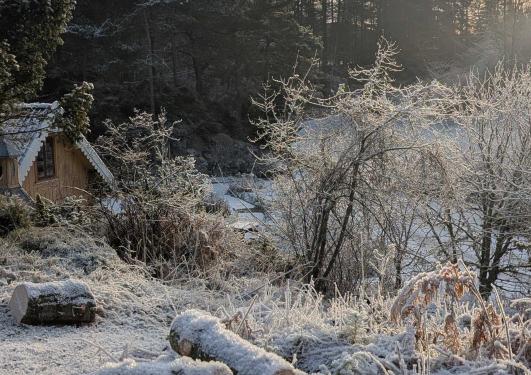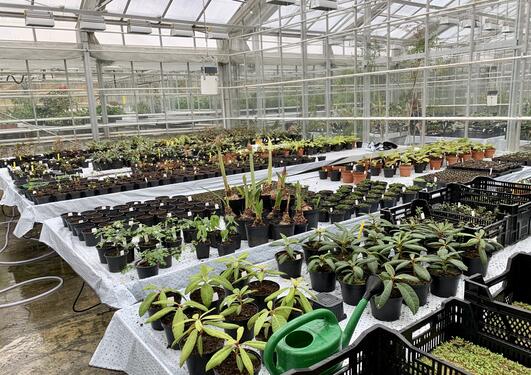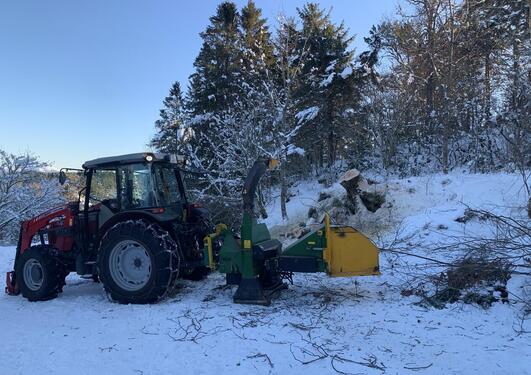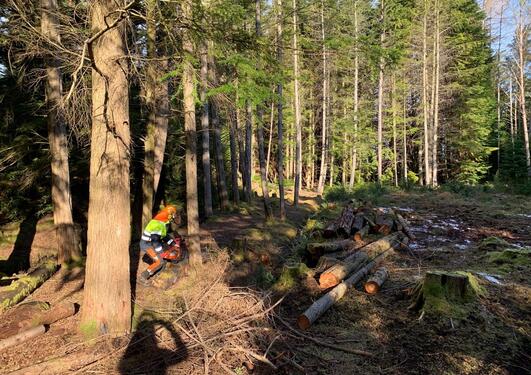Vår er ramsløk, men er det noen som spiser det?
Dette blogginnlegget om ramsløk er det tredje fra UiB-forsker Scott Bremer som gjør feltarbeid i Universitetshagene.
Hovedinnhold
Denne gangen skriver han om ramsløk, og hvordan ulike matvarer kan markere årstider og overganger. Vil denne nærheten til naturlige variasjoner i diett bli annerledes med våre moderne supermarkeder og umiddelbare tilgang til alt?
Spring is wild garlic, but is anyone eating it?
I first heard about ramsløk in June last year. We gathered a group of Bergensers at Aldea art workshop and asked them to produce a contemporary version of a primstav (traditional Norwegian calendar plank) for Bergen, replete with modern-day symbols of important days or events that mark the passing of the year. The group roundly agreed that ‘spring is wild garlic’, and a stylized leaf made it onto our machine-carved wooden primstavs.
Then last week, one of those leaves – this time a green and lush exemplar – was lying on the lunch table at the Arboretet, and quickly became the centre of attention. People started sharing ramsløk recipes and talked at length of its medicinal properties for cleansing the blood. Someone argued that these properties are not to be dismissed seeing as they are based on generations of experience and observations, including how a bear waking from winter’s hibernation will often head directly for the nearest patch of wild garlic and devour it as a matter of course.
I was fascinated. Not only that I'd almost made it to 40 without hearing about this miracle plant, but of the position it held in people’s representations of natural order and cycles. Not just as a source of food but as symbolic of moving out of winter.
Later that afternoon I worked with a gardener in the rosarium, and they showed me some of the other wild edible plants that are sprouting up at the moment. They wondered out loud whether these foraged plants are still part of people’s diets. Certainly some plants still seem to feature prominently in people’s imaginations; in addition to the ramsløk leaf, the contemporary primstav drawn last year included a symbol of blue-berries around August. But many more edible plants have been replaced by imported foods we find in the supermarket. Oranges from Spain, bananas from Peru, or ‘taco Fridays’.
In the gardens I see vestiges of a local seasonal food culture, attached to a phenology of plants and animals. But as our diet changes, becoming more globalized and detached from local natural cycles, then so do the ways we relate to seasons. Food still tells the time for us though, whether its tacos signaling the weekend, or lamb signaling Easter. And as our contemporary primstav hints, some people see our seasonal food culture as a hybrid of old and new diets.
This is the third blog post from Dr. Scott Bremer doing fieldwork in the University Gardens, you can read the other blogs here.







